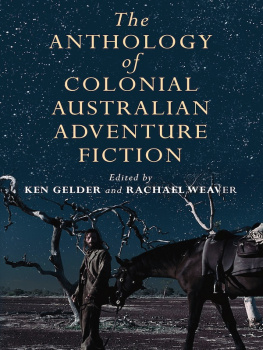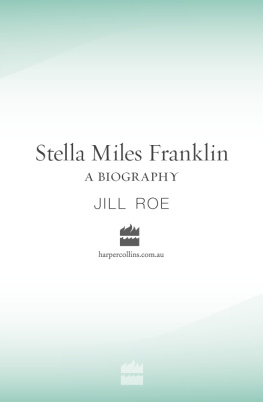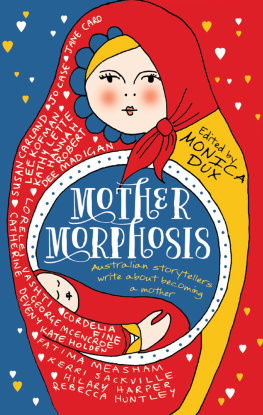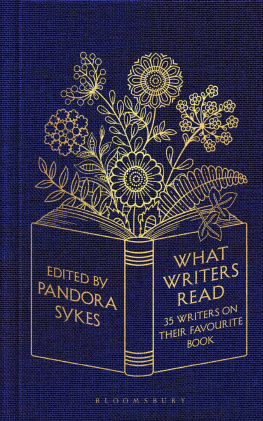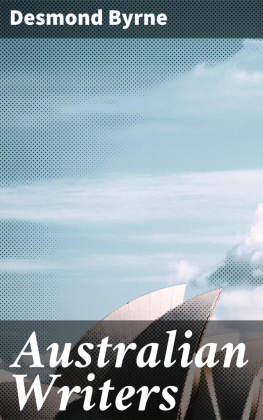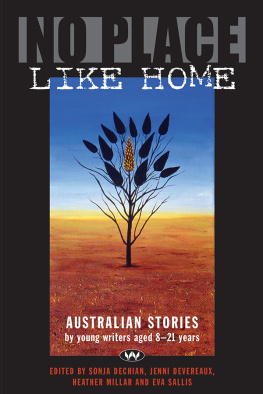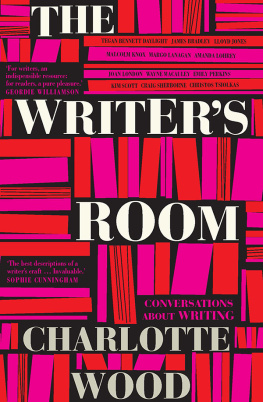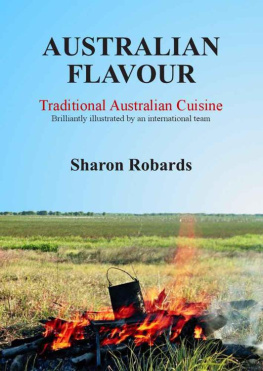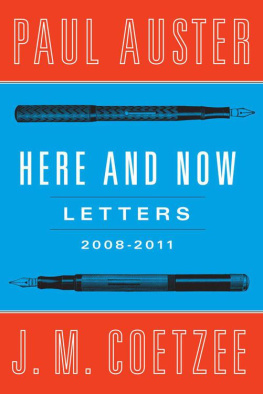Contents
Page List
Guide

Reading
like an
Australian
writer
B ELINDA C ASTLES is the author of four novels: Bluebottle, Hannah and Emil, The River Baptists and Falling Woman, and winner of the Australian/Vogels and Asher literary awards. She teaches writing at the University of Sydney.
What a generous and necessary anthology this is. Enriching and illuminating, it offers layer upon layer of interest. In unravelling their own passions as readers, the writers in this collection reveal, too, their own writerly processes. Individually, the essays here offer tools for the writer and for the reader. Together, they form a communal praise song to Australian literature in its many guises. Ill be returning to these pages repeatedly for reading lists, for writerly wisdom, and for sheer pleasure.
KATHRYN HEYMAN
Belinda Castles has produced through canny, insightful curating an invaluable new resource for studious writers and devoted readers alike. The essays collected within these pages not only serve to document contemporary Australian literature, they actively work to sustain its future.
SAM TWYFORD-MOORE
This is a timely book, bringing fine and inventive reading strategies to so much significant and personally cherished writing.
BRENDA WALKER
A NewSouth book
Published by
NewSouth Publishing
University of New South Wales Press Ltd
University of New South Wales
Sydney NSW 2052
AUSTRALIA
newsouthpublishing.com
Belinda Castles 2021
First published 2021
This book is copyright. While copyright of the work as a whole is vested in the editor, copyright of individual chapters is retained by the chapter authors. Apart from any fair dealing for the purpose of private study, research, criticism or review, as permitted under the Copyright Act, no part of this book may be reproduced by any process without written permission. Inquiries should be addressed to the publisher.
 | A catalogue record for this
book is available from the
National Library of Australia |
ISBN9781742236704 (paperback)
9781742245294 (ebook)
9781742249858 (ePDF)
Internal design Josephine Pajor-Markus
Cover design Madeleine Kane
Cover iIllustration Michelle Pereira
All reasonable efforts were taken to obtain permission to use copyright material reproduced in this book, but in some cases copyright could not be traced. The editor welcomes information in this regard.
This project is supported by the Copyright Agencys Cultural Fund and The University of Sydney School of Literature, Art and Media.

Contents
Ellen van Neerven
Julienne van Loon
Tegan Bennett Daylight
Ryan ONeill
Rose Michael and Jane Rawson
Anna Spargo-Ryan
Felicity Castagna
Peter Polites
Ashley Hay
Nigel Featherstone
Cate Kennedy
Roanna Gonsalves
Angela Meyer
Fiona McFarlane
Hoa Pham
Maria Takolander
Debra Adelaide
Emily Maguire
Belinda Castles
Irini Savvides
Stephanie Bishop
A.S. Patric
Beth Yahp
Nicholas Jose
Mykaela Saunders
Like most maybe all writers, I learned to write by writing and by example, by reading books. Francine Prose, Reading Like a Writer
Monkey Grip changed reading for me. It was more than just the feeling of recognition For the first time I was consciously learning about writing. Tegan Bennett Daylight, A phone call to Helen Garner in Debra Adelaide (ed.), The Simple Act of Reading
All writers begin as readers. And one day, as for musicians, dancers and painters, a connection sparks: the magic we absorb wants to emerge in a new form, shaped by our own minds and bodies. We respond, touching the pencil to the page to begin our story. As we go on this alchemy becomes purposeful, intended we search out the elemental mixture and process that will conjure gold. Reading takes on a particular attentiveness as we develop an interest, a stake: in method and effect. How, we ask the writing, are you making me think the things I am thinking; feel the things I am feeling?
I call myself an Australian novelist, though I was not born here. More than one place made me a common story for our writers. The voices in this book often have complex relationships to the country from which they write. Australian writing speaks in its many accents of the diversity and unique history of this country: its thefts, losses and struggles, its distinctive sensory experiences, its imagined futures. When we read Australian stories we see what it is possible to say, and perhaps what still needs to be said.
The array of contributors and stories in these essays gives us an insight into the kinds of conversations taking place in Australia between writers and particular kinds of readers those who themselves make things out of words. It begins to show the skeins of voices and experience in Australian stories and is a record, at a point in time and in the midst of various contingencies, of a particular editor making connections. As a picture of Australian fiction, it is energetically incomplete, part of a conversation that is always moving forwards. Nicholas Jose has called Australian literature a body in time: that is, a connective body of material, an entity that moves beyond the individual to a community of writers and readers linked through history and geography and culture a set of relationships (104). This book is one such set of relationships, made through reading and writing in the context of Australia. To repurpose a term that Roanna Gonsalves applies to the fiction of Michelle de Kretser, it is a conversation that is not closed, or finished, but unfurling.
The writers of these essays are distinguished writers of fiction, and also teach and mentor others writing their own stories. They show us how they read and in doing so give us two gifts: models for attentive reading for reading as a writer and the fascinating results of their attentions. They offer us insights into their own ways of processing experience at the same time as illuminating the close-up magic of stories (as Cate Kennedy has it in her essay on Tim Winton). Most students of creative writing will recognise this mode. They too are asked to write reflectively, exploring the texts that have meaning for them as they work towards their own writerly ambitions. When they do this, they also give this double reading, showing what is important in their own work by where they place their attention in the writing of others.
There is an electric hum in this meeting place of readerwriter. We witness the reading mind at work, its thoughts laid out on the page. We enlarge our sense of what it is to be a reader and a thinking person alive in this world. We encounter different minds, different approaches to sometimes familiar stories, and our reading attention is renewed.
It has been a difficult year in which to write, and the traces of this difficulty are threaded through the collection. The pieces grapple not only with matters of craft but with method more broadly, and existentially. How does one write in such times? As always, we look to our reading for help.



